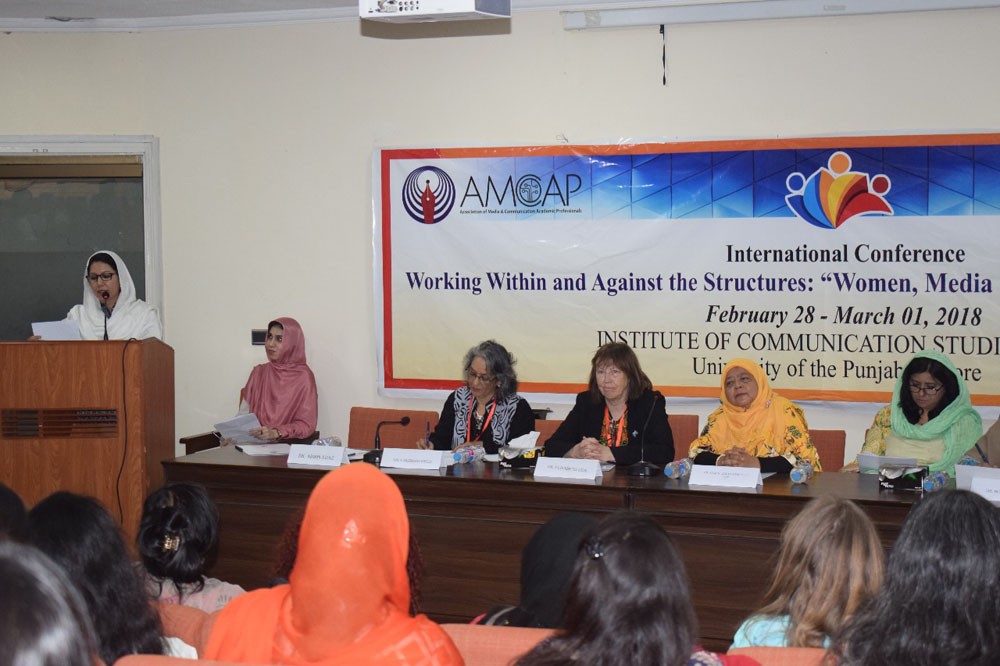
Women come together at a two-day conference, titled ‘Working Within and Against the Structures’

There were women in large numbers, not just from across the country but from other countries as well, at the two-day conference, titled ‘Working Within and Against the Structures: Women, Media and Transnational Perpectives,’ that was recently held at the Punjab University’s Administrative Science department.
People seemed to be seeking each other. The speakers were largely academics. The other speakers were media women, writers, and women rights activists.
Most noticeable were the academics’ works. All of them had come to the conference with empirical research that took months, maybe years, and all of them gave their presentations with data. In the two sessions that I attended, they really came across as impressive. They were teachers and PhD scholars.
Two PhD scholars came up with research on cartoons -- one had taken three tv channels that showed cartoons for children only. It transpired that cartoons are not harmless and show stuff which is unhealthy for children. The researcher called for parental media literacy. The other presenter took illustrations published in the editorial pages of different newspapers, and chose the ones that depicted women. Only one illustration showed women in a positive light.
While mostly the people spoke in English so that everyone could understand, there was a writer who chose to speak in Urdu because that was her strength. She spoke on the evolution of drama, how men had moved away from tv and that it was time they were brought back. She received much applause.
Dr Anjum Zia, head of Media Studies at Lahore College for Women University (LCWU) said in her presentation that women comprise two per cent of the workforce in print and six per cent in electronic media.
In the closing session, Fareeda Shaheed, executive director of Shirgat Gah, put the men-women ratio in media at 5:1. Some of her observations are listed here: "Less than 10 per cent women are in senior roles in media organisations; harassment is largely 69 per cent by their superiors; there are many challenges for women in media; media’s language is important. It is producing social meanings all the time."
She said, "Strike until the iron is hot, not when the iron is hot."
Everybody seemed enthusiastic to voice their concerns, observations and findings. Immense goodwill flowed among the women who had gathered at the conference. The idea of bringing them together on a platform to consciously make efforts to push boundaries, make more room for discourse and action, was Dr Bushra Hameedur Rehman’s initiative who teaches at the Institute of Media Studies of the university. She said that she had taken this idea to Norway and with her dedicated team turned it into a reality.
The conference gave women a chance to speak their mind, share their work, and expand their network. A professor from Malaysia who was also there, viewed the conference as exchange of ideas, stressed on perseverance and the importance of sticking to meaningful people.
Come tea break and lunch, and the women were seen chattering and what I heard from one end to the other, exchanging ideas, informing each other of their work. Everyone felt free to speak their mind, and this sense of freedom was palpable.
The PU’s Administrative Science department wore a festive look with tables and sofas laid out in the corridors of the first floor. Several sessions went on for two days.
Over a hundred people were invited to speak in different sessions. There were women from Norway, Malaysia, Indonesia, and Bangladesh while from Pakistan there was representation from Balochistan as well as Swat.
If the idea was to generate "sister solidarity" the conference truly made way for that.
The story appeared in the print version on March 4, 2018 under the headline Generating "sister solidarity."